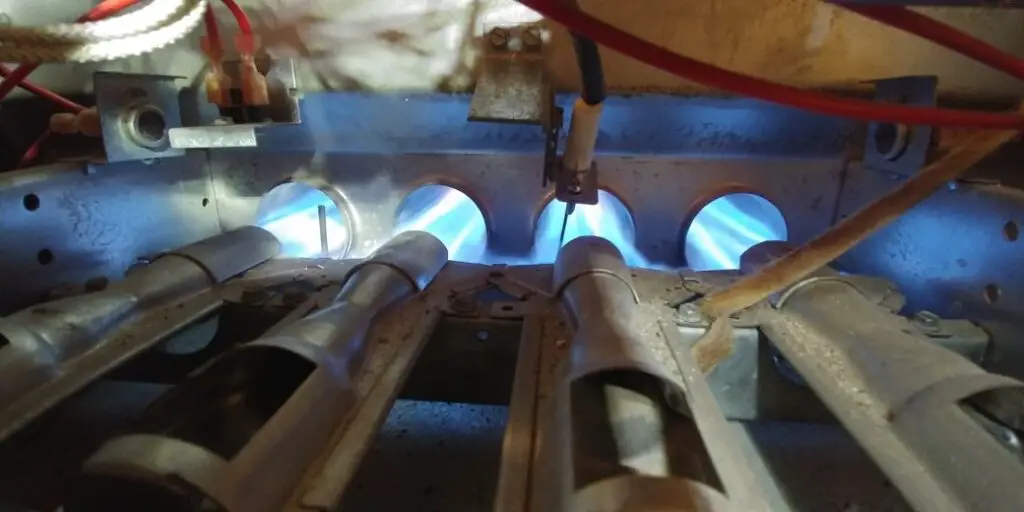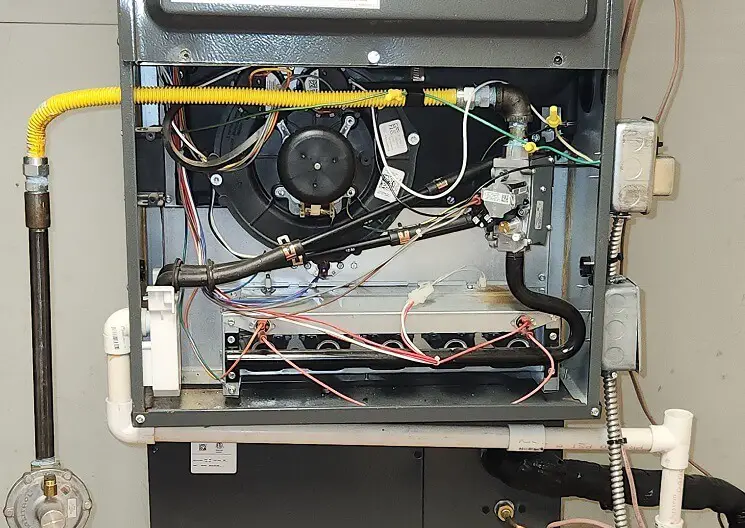The sequential operation of todays gas furnaces is essentially the same from brand to brand. The first step in a heating cycle is for the furnace to receive a signal from the thermostat. Most thermostats these days are digital and will display “heat on” somewhere on the screen depending on your type of thermostat.

With the thermostat showing “heat on” or, if you’re using some other type of thermostat that’s not digital, you probably know when it should be on to begin the sequence of operation. So the cycle of your gas furnace is as follows:
- The inducer motor begins to clear the heat exchanger and the flue of any residual gases. The inducer motor is located near the center of the heating compartment and it has a small motor that turns a concealed blower wheel attached to the flue pipe.
- A pressure switch or switches registers the fact that the inducer is operating and the flue pipe is clear of any obstructions such as mud daubers or birds.
- When all is clear and inducer fan is running the ignitor (HSI) will begin to glow. Typically a hot surface ignitors send a signal to the control board that allows the gas valve to open.
- When that signal is received from the HSI the gas valve will open and the burners will ignite.
- With the flame burning you may notice if you look close enough, a small probe, usually on the other end of the burners from the HSI.
- The flame sensor is a metal probe protruding into the flame. When the flame burns on the sensor a very small amount of power is generated sending another signal to the control board that says everything is good and allows the gas valve to stay open.
- Within a short time (it varies) the fan will turn on sending heat through the supply ducts and pulling conditioned air into the return ducts and the air filter.
- When the thermostat is satisfied or reached the temperature you set it to, the furnace will begin to cycle off.
- First the gas valve will close
- The inducer motor and the indoor blower will continue for a short time to cool the heat exchanger and remove unnecessary flue gases from inside the heat exchanger and the flue.
- The furnace will then shut down and wait for the next cycle.
Two Stage Gas Furnace Sequence Of Operation
The 2-stage gas furnace operation is basically the same as the single stage with one minor difference. When a 2-stage gas furnace is wired correctly to the thermostat it allows the to fluctuate between high and low fire according to the need.
If you cool your house down at night because you want to save a little energy or you just like to sleep in a cooler house then in the morning when the furnace fires up it will likely start or eventually turn on high fire.
As your home reaches the set point of the thermostat then the furnace will adjust to low fire and save a little fuel. Generally it will run on low fire depending on a lot of factors such as weather and your homes insulation and window.
How Does A Modulating Gas Furnace Work?
Again, the sequence of operation for a modulating gas furnace is the same except for the gas valve and the other components modulate instead of switching on and off.
It’s very similar to your water faucet. You turn it on according to the volume you need. If you just need a little bit of heat the gas valve will modulate or adjust to a smaller flame and maybe a little bit less air flow.
To Sum It Up
I hope this answers your questions on the sequence of operation of your gas furnace. Before you know it you’ll be troubleshooting the problems which are sometimes simple when you find the diagnostic light on the control board.
To help you with the diagnostic light there will be a diagnostic table somewhere inside one of the furnace doors that will tell you what has failed by the flashes of the light. Good Luck

